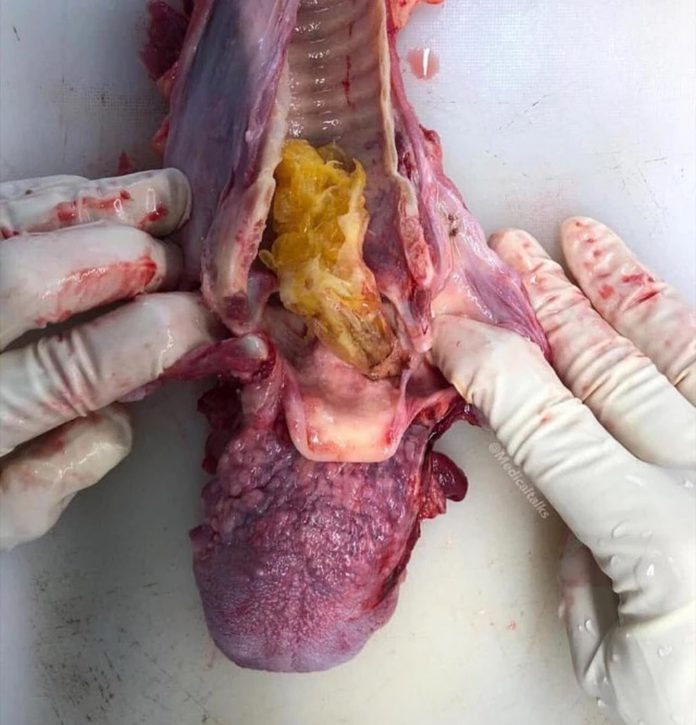The patient reported into the emergency room with an orange slice lodged in the trachea. Death because of mechanical asphyxia is generally uncommon in adults and usually because of strangulation by clothes caught in machinery, especially in case of occupational deaths, ligature strangulation, entrapment, aspiration, choking and sexual asphyxia, more frequently. Examples of mechanical asphyxia include choking, which involves the blocking of the airway passage, including the bronchi, trachea, larynx and posterior pharynx by a foreign object. Objects causing mechanical asphyxia commonly include toy balloons lodged in the airway of children, impaction of food bolus in the epiglottis and as in this case, a huge slice of orange.
It is quite infrequent for patients to die resulting from accidental mechanical asphyxia. Mechanical asphyxia is usually because of the reasons mentioned above. However, accidental hanging almost never occurs in adults, except for autoerotic deaths and compression of the neck because of immobile solid structures, which is also rarely reported. Asphyxia is a term derived from the Greek word meaning “stopping of the pulse”, literally. The term is used for referring to a number of conditions with different etiology in which there is either often an accompanying retention of carbon dioxide, uptake or utilization of oxygen by the cells or tissues of the body or an inadequate delivery. Conditions which lead to asphyxia generally include breathing in an atmosphere which is deficient of oxygen or an interference in breathing, while inhalation and exhalation or because of respiration – an exchange or utilization of oxygen. Moreover, these are the conditions which were thought to involve the airway historically, causing it to compromise but are now recognized as being involved in altering hemodynamics and restriction of the flow of blood, for instance, compression asphyxia and strangulation are still classified as asphyxia.
Asphyxia occurs when the body does not get enough oxygen to keep the patient from passing out, making it a life-threatening situation. First you take in oxygen when you breathe normally. The oxygen is sent to your lungs and then into the blood which is carried to the tissues. If there is any kind of interruption in the breathing process or the breathing out of carbon dioxide, it can make you pass out or even lose your life.
Similarly, physical or mechanical asphyxia happens when there is an object or force keeping you from breathing. Some examples of asphyxia are choking and aspiration. When food or any object gets stuck in the airways and blocks your lungs from getting oxygen, you choke. Elderly are more exposed to the scenario of choking, especially if they have trouble swallowing, wear dentures or live alone. Moreover, babies and toddlers also have a higher chance of choking on things put in their mouth or large pieces of food. Another form of choking is aspiration which occurs when you drink or eat something which goes down your windpipe rather than the food pipe, entering the lungs or airway passage, moreover, crowds the airway passage.
References
- Sauvageau, A., & Boghossian, E. (2010). Classification of asphyxia: the need for standardization. Journal of forensic sciences, 55(5), 1259-1267.
- Ciprandi, B., Andreola, S., Bianchi, M., Gentile, G., & Zoja, R. (2017). Mechanical asphyxia by accidental compression of the neck during a theft: A case report. Forensic science international, 278, e24-e26.




